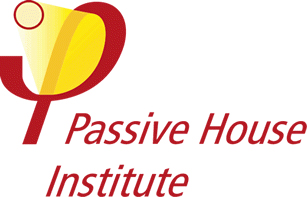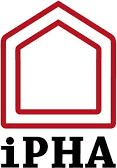Below are comments made to the PHIUS review committee by Barry Stephens of Zehnder America. Reprinted here with permission.
———————————————————————————————————————————
In reviewing the Climate Specific Passive Building Standards, I encounter some glaring deficiencies. Although there is a lack of detail in the draft with regards to H/ERVs and ventilation, it can be determined that there is no actual standard being used to quantify energy efficiency and/or energy recovery that correlates to the modeling being used.
The PHPP inputs for heat recovery ventilation have been calculated with inputs from testing protocols developed by PHI in Germany. Eberhard Paul, the founder and former Managing Director at Paul Warmerruckgewinnung in Germany, has coordinated with engineers at PHI to develop this standard, and to confirm that the inputs are consistent and reliable in determining that the resultant efficiency used for the PHPP reflect actual energy recovery and usage.
It has been repeatedly demonstrated that the protocols used in efficiency testing by the Home Ventilating Institute (HVI) are inconsistent with the PHI standard, with discrepancies tested to be from 3% to 32% for units tested to both protocols. The past practice of using a 12% correction to the Apparent Sensible Recovery (ASR) as reported at HVI as the input for the PHPP has been shown to be a generous reduction, and in many cases the actual performance of homes modeled in the PHPP using this method have performed significantly less efficiently than expected.
A detailed analysis and presentation was done at the NAPHN14 conference by Andrew Peel, and can be found from the link at the NAPHN website here.
Additionally, there are very significant additional standards that PHI includes in the H/ERV certification that are missing from the draft standard. Specifically, PHI measures electrical efficiency, heat recovery efficiency, comfort, and noise levels. These are important factors in high efficiency homes:
Electrical Efficiency – A maximum level of power consumption, measured as watts/cfm (or Watts/Cubic Meter per Hour in Europe), is a benchmark for an energy efficient home. Like any metric of efficiency, there is a threshold that once exceeded, renders any appliance unworthy of being considered “Energy Efficient”. The proposed standard includes no such threshold.
Heat Recovery Efficiency, measured using the exhaust air stream as opposed to the fresh air stream per HVI, at a minimum of 75%, is the benchmark. This is an important factor in Comfort.
Comfort – PHI requires a minimum of 88% ASE, as measured by HVI. Although the testing is slightly different with the PHI testing protocols, this is the closest to a parity with the two protocols. This is tested by PHI at -10C. This is critical to occupant comfort. Bringing outside air in at 14F and having a resultant temperature of 62F or less is considered uncomfortable. Additionally, it has been demonstrated that homeowners often turn off the H/ERV when incoming air temperatures reach these thresholds. This is an issue with sound levels as well.
Sound Levels – thresholds for sound levels have also been shown to be critical, per the above scenario. HVI has no testing protocol for sound levels, and it is known that Passive House levels of insulation, triple glazed windows and excellent air sealing result in very quiet buildings where mechanical system sound levels can adversely affect occupant comfort. Especially if the unit is switched off due to the sound level. The Passive House community is fully aware of these issues, as Zehnder H/ERVs have been sourced to replace quite a few (over 10) ERVs that were the subject of homeowner complaints due to noise.
It is especially glaring that in reviewing the list of Technical Committee members who contributed to this draft, there is not one member who is knowledgeable in heat recovery ventilation, when H/ERVs are such an important and integral component in high efficiency buildings. Zehnder America, Inc, as the only manufacturer of H/ERVs in North America that are PHI certified, has a significant number of staff members that are internationally recognized authorities in this technology. Yet Zehnder was not consulted in the development of the standard. We did try to provide some insight and guidance, which was ignored.

























